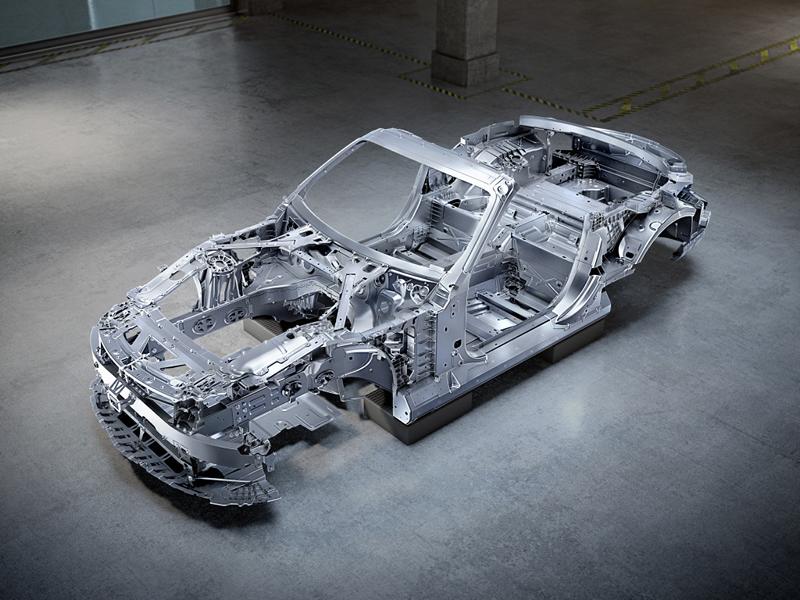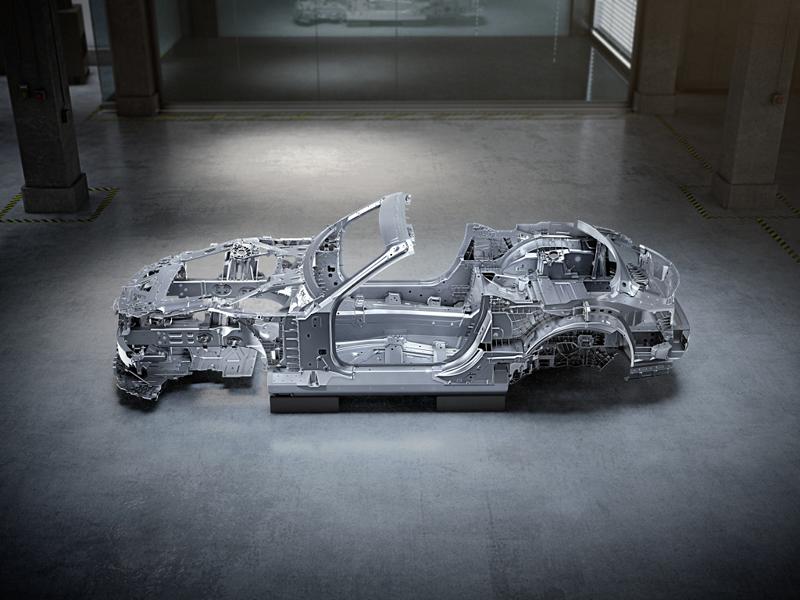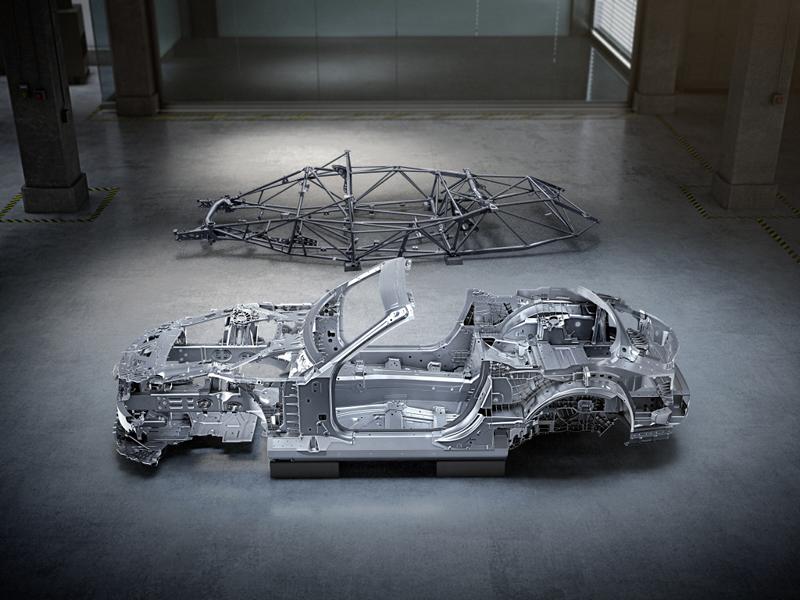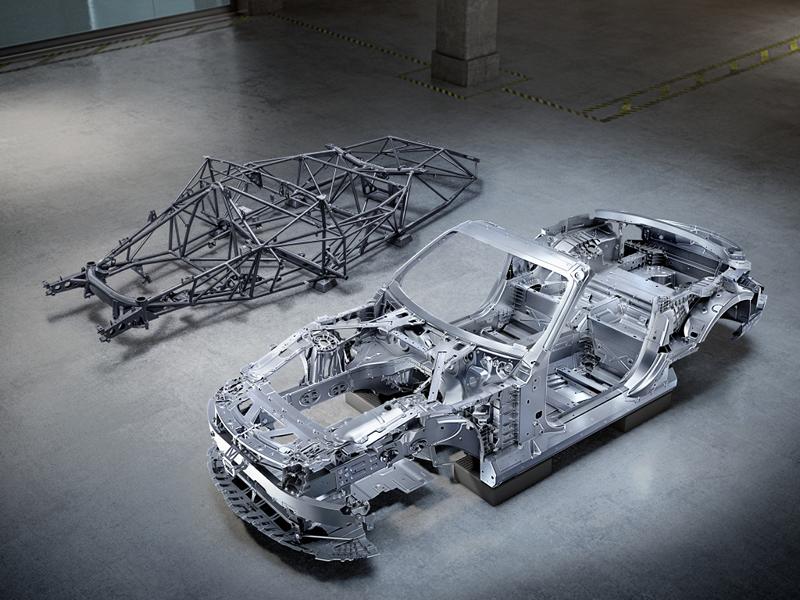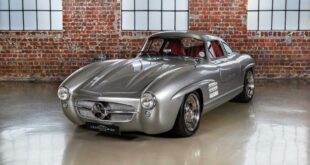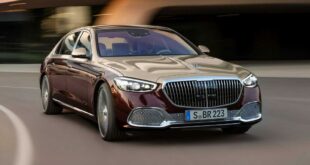Recently updated on December 20, 2022 at 11:21 am
Photo credit: Mercedes-Benz
It all began in 1952 with a filigree tubular space frame, which in the first SL combined low weight with the highest possible torsional stiffness. This construction was born for the original use in motorsport and was further developed for the later series model as a coupé and roadster backbone. This year, the new edition of the iconic roadster will be presented, based on a vehicle architecture completely redeveloped by Mercedes-AMG. The lightweight composite aluminum structure provides the basis for precise driving dynamics, a high level of comfort, optimal packaging and a sporty body -Proportions. The new roadster architecture consists of the combination of an aluminum space frame with a self-supporting structure. As with the first SL in 1952, it was literally created on a blank sheet of paper: not a single component was adopted from the predecessor SL or, for example, the AMG GT Roadster.
Mercedes AMG SL
“Our development team in the shell construction area was faced with an extremely attractive but also challenging task: When we received the order for the overall development of the new SL, we were able to start from scratch, so to speak, without building on an existing structure. We can rightly be proud of the result and it once again proves the high level of development expertise in Affalterbach. Because, on the one hand, we have managed to combine the high package requirements. On the other hand, we were able to achieve excellent rigidity values in all areas with a favorable weight, in order to lay the basis for agile driving dynamics and high comfort, ”says Jochen Hermann, Chief Technical Officer of Mercedes-AMG GmbH.
The demands on the shell architecture of the new luxury roadster were high: the specifications required a significantly more extensive scope of services than the previous model series. In particular, the basic layout with 2 + 2 seats and the focus on a large variety of drives were implemented for the first time in an SL and presented the developers with completely new challenges in terms of their complexity. The aim was to present the brand's typical driving performance with a focus on lateral and longitudinal dynamics as well as to meet the high standards of comfort and safety.
That was largely the case as early as 1952: The tubular space frame as the basis of the SL success almost 70 years ago is very light and yet has a very high torsional stiffness. In the entry area it is so high that regular doors are not possible - the famous double doors are the result of the design. The frame construction, which is designed exclusively for tensile and compressive loads, enables small pipe diameters. The stability is guaranteed by numerous closed triangles, which transfer the forces that occur to a pipe pyramid at the end of the engine compartment.
Intelligent material mix with a high proportion of aluminum and new fiber composite materials
In the new SL, on the other hand, the intelligent material mix of aluminum, steel, magnesium and fiber composites enables the highest possible rigidity with low weight. Optimized material cross-sections and sophisticated component shapes create space for the required comfort and safety equipment, the sophisticated technology and the soft top. Other targeted measures include aluminum push panels on the underbody and function-integrated struts on the front and rear of the vehicle. The instrument panel made of magnesium and the lock bridge made of a fiber composite material with a mixture of glass fibers and carbon also prove the efforts of the engineers for the best possible, tailor-made use of the most varied of materials. This also applies to the windshield frame made of high-strength, hot-formed tubular steel. This serves, in connection with an emergency bar system behind the rear seats that can be extended at lightning speed, as rollover protection.
Cast components with customized wall thicknesses
Cast aluminum components are used at the force nodes or at points of high functional integration, i.e. where high forces have to be transmitted. The cast components offer the advantage of a targeted dissipation of the forces and the possibility of designing the wall thickness locally and individually according to the load. In this way, higher stiffnesses that are required at specific points, for example on the chassis connections, can be achieved. In addition, only the required wall thickness is implemented at each point of the component, which saves weight in areas that are not subject to much stress.
Compared to the previous series, the torsional rigidity of the bodyshell structure increased by 18 percent. The transverse rigidity is 50 percent higher than that of the AMG GT Roadster, the longitudinal rigidity is 40 percent higher. The likewise improved introductory rigidity for the chassis connection guarantees sporty driving behavior with precise handling and high agility. The weight of the pure shell without doors, bonnet and trunk lid as well as without add-on assembly parts is around 270 kilograms.
The entire vehicle concept is geared towards the lowest possible center of gravity. This applies both to the deep connection of the drive train and axles and to the arrangement of the rigidity-relevant components of the bodyshell structure. Examples of this are the flexurally and moment-stiff connections between the front and rear of the vehicle and the safety passenger cell, which are consistently implemented using force paths that are as deep as possible.
Quality and workmanship at the highest level
Modern joining techniques such as MIG welding, laser welding, punch riveting, blind riveting, MIG soldering, glued seams or flow-hole screws as well as precise tool construction raise the level of the shell appearance and quality to the highest level. This applies equally to gap dimensions as well as to radii or joint courses. It goes without saying that the new Mercedes-AMG bodyshell architecture meets all internal crash requirements, which in many areas are much stricter than legal requirements.
Despite the extremely high quality requirements, the chassis development was implemented at a record-breaking pace: the preliminary development was completed in just three months. It took less than three years from the placing of the order to an initially only six-person team to the approval for series production. The high quality of the software used in the digital development made it possible to approve the production of the series tools without a real chassis prototype. And the so-called structural safety vehicle, which is of immense importance for passive accident safety, already met the extremely high internal requirements in the first real crash test. The new SL is manufactured at the Bremen location, where the predecessor already rolled off the production line.
Don't worry, of course that was far from being the case when it came to auto / auto tuning. Our magazine still has tens of thousands other tuning reports in stock. Do you want to see them all? Then just click HERE and look around. Or are you particularly interested in everything to do with the manufacturer Mercedes-Benz? Then the following excerpt with other vehicles is definitely the right one.
|
Not all gold that glitters - Mercedes 300 SL replica is looking for a new owner! |
Are you ashamed? The new Mercedes-Maybach S 680 with V12 engine! |
tuningblog.eu - on the subject of cars, motorcycles, bikes / ATV / scooters & Co., and of course our passion, the Tuning, we keep you up to date and report daily on cool vehicles from all over the world. It's best to subscribe to ours Feed and you will be automatically informed as soon as there is a new post.
 tuningblog.eu Your magazine about tuning the car
tuningblog.eu Your magazine about tuning the car
